Community
Deep Drift Diving in Cozumel
With its spectacular reef encrusted walls and irresistible current Cozumel has been a ‘Mecca’ of recreational diving for nearly thirty years; mind that 130-ft/40m depth limit! Now explorer and tech instructor Alberto Nava takes us on a journey to rediscover the parts of underwater Cozumel that single-tank tourist divers will never see. Are you ready to mix it up and conduct some unapologetically DEEP Cozumel drift diving?
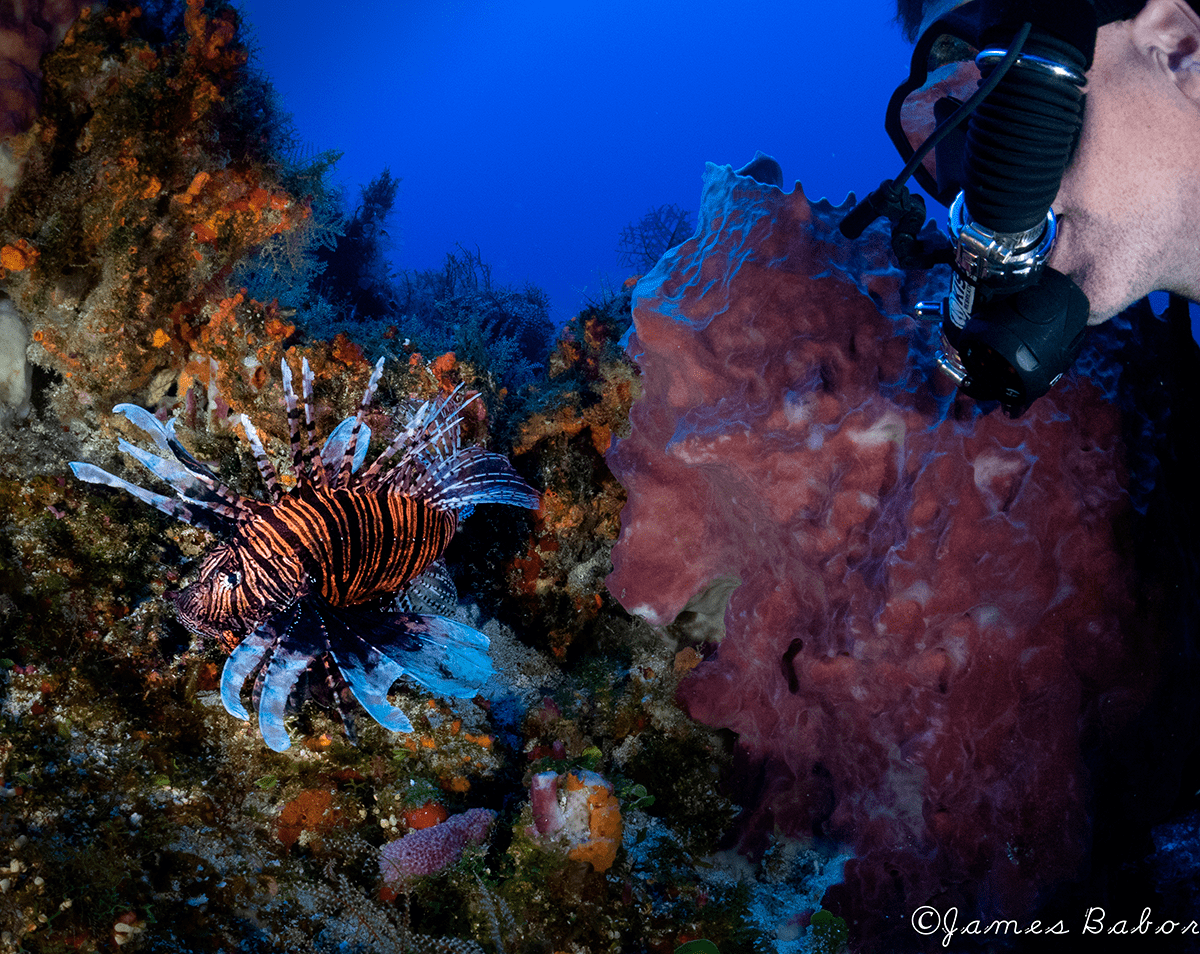
By Alberto Nava
Header photo by James Babor.
After doing all my closed circuit rebreather (CCR) critical control checks, i.e., “CHAOS,” I jumped into the water to find myself in warm, cobalt blue water. We descended to 6 m/20 ft, did a quick bubble check, and started our descent. My automatic diluent valve (ADV) delivered a wonderful trimix 15/60 (15% O2, 60% helium) mix as I dropped down the wall and leveled off at about 60 m/197 ft. A large black grouper came to greet us, and we quickly reached the 65 m/213 ft overhang on the wall—the old coastline from the previous ice age. We followed the grouper inside the overhang and reached 80 m/263 ft. We found two large lionfish resting on a sizeable white sponge, and large strands of black corals and colorful gorgonian were all around. We turned our bodies into the current and began our 180-minute drift dive along the incredible walls of Cozumel. We were in heaven!
As we drifted along enjoying this incredible dive, my mind drifted back 20 years ago,
when I used to dive the Caribbean Sea in my home country of Venezuela. At that time, I had just become a PADI divemaster and used to take people on warm-water adventures in Venezuela’s national marine park, Los Roques Archipelago, near the island of Bonaire. As a divemaster, we limited our dives to 30 m/100 ft and closely followed the no-decompression limits. The tools of those times were single aluminum 80 (AL80) tanks, a warm-water wetsuit or no wetsuit at all on some dives, and the famous multi-level diving PADI wheeI.
In my 20-year evolution as a diver, I’m so thankful to have found the Global Underwater Explorers (GUE) organization and its amazing mentors, which made my 180-minute dive to 70 m/230 ft seem as simple as the old single tank diving of my past. Is this for real? Can Caribbean diving be even more incredible with GUE tools? Please allow me to take you on my rediscovery of the Caribbean during the last three years, with the hope that you will also enjoy the incredible natural resource we have at our disposal.
In 1998, as technical diving was just getting started, I moved to California after spending a few years attending school in Sydney, Australia. My time in Oz had left me a bit frustrated, having experienced what I now perceive as dangerous deep air dives in the Sydney Harbor as well as in the caves of Mount Gambier, near Melbourne. I arrived in California wanting to learn to use alternative breathing gases for going deeper.
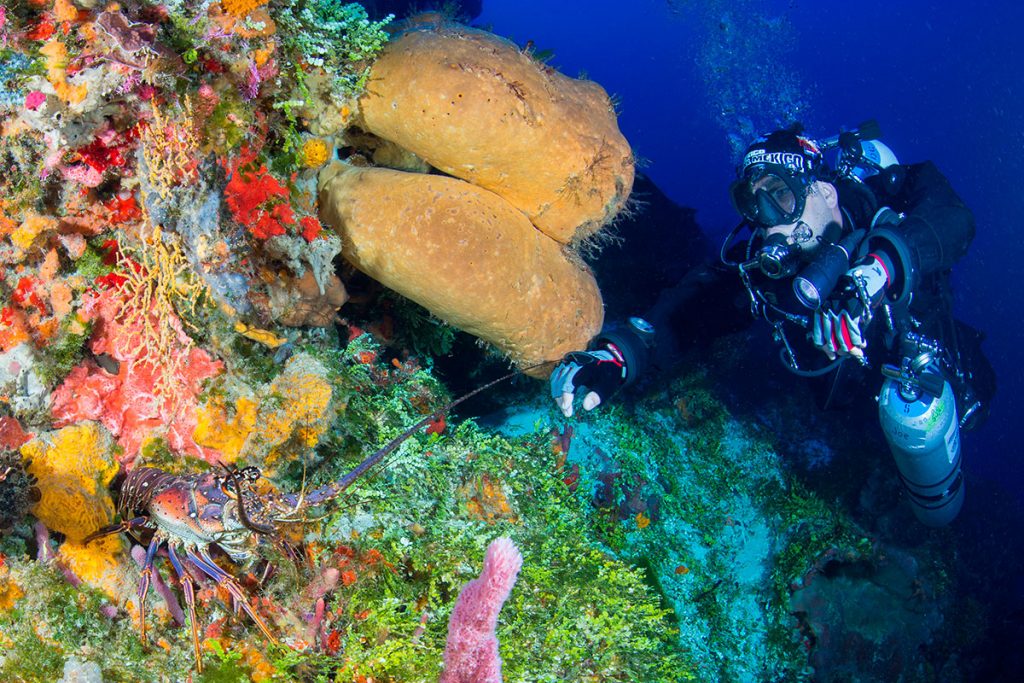
I experienced improvements on the diving procedures and gases while training with West Coast technical diving pioneer Wings Stock from Santa Cruz, where we used to breathe trimix 20/20 (20% O2, 20% helium) at 67 m/220 ft. But, it was really not until I took my GUE Tech 1 class in 2001 that deep diving came to a new light. Helium was such a wonderful gas to put in our tanks, and the more the better. For me, doing a 46 m/150 ft dive with 35% helium removed most of the ambiguities of deep diving, reduced the risk, and made deep diving a much more enjoyable experience.
Living in Monterey, I was able to explore and document many of our deep water pinnacles, including those at Point Lobos Marine Reserve, Big Sur Banks, and others.
Unfortunately, I quickly forgot all about the Caribbean and settled in as a cold-water California diver. During that time I also started going to Mexico to dive the amazing caves of the Yucatan Peninsula.
Fortunately, I got better at cave diving, got into exploration, and was lucky to discover the Hoyo Negro Pit and an amazing assembly of animal and human remains from the Late Pleistocene. From 2007 to 2014, Hoyo Negro, underwater archaeology, and scientific diving were at the center of my diving world. As time went by, my distant past as a Caribbean diver faded more and more from my diving horizons.
The Return to the Caribbean
In 2014, I reluctantly agreed to a warm-water diving vacation with my girlfriend. Cozumel was close to the caves, so I figured I could do my cave diving project, then spend a few days of diving Cozumel in order to make everybody happy. However, as soon as I jumped into the water, I recognized the warm, blue water surrounding my body and realized I had been there before; in fact, it was imprinted in my mind.
I was quickly able to find all the little creatures inhabiting the reef, including seahorses, green moray eels, and arrow crabs, and the larger creatures as well: barracudas, eagle rays, and nurse sharks. I felt about 20 years younger, having returned to my natural environment. On the second day of diving, after the divemaster gave us a check out, we ventured to the Cozumel wall. We quickly dropped to 30 m/100 ft, and I could see the wall going down, probably to 60 m/197 ft. I immediately wanted to go deeper on the wall and explore! However, considering my minimum gas reserves, equivalent narcotic depth (END), and maximum operating depth (I was diving nitrox 32), I realized that I needed the right tools.
By the end of the trip I was convinced I needed to come back to Cozumel with GUE tools. At a minimum, we needed to ditch the single tanks for doubles, or better yet a rebreather, and find a way to get helium, Softnolime, and a reliable boat operator willing to conduct some fun tech dives.
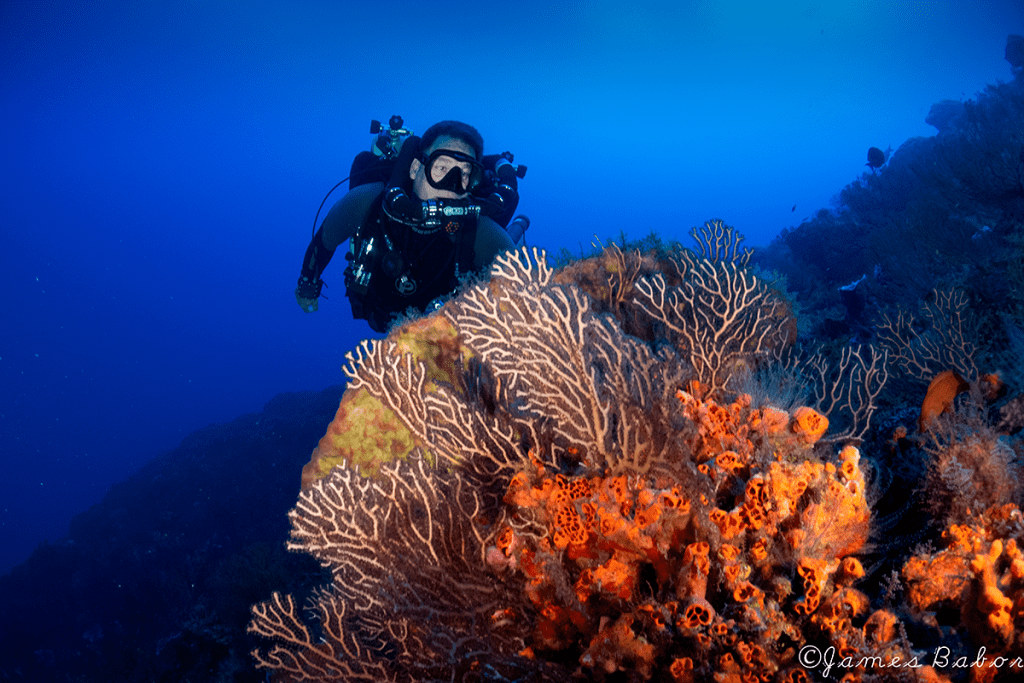
I got back home and started talking to Cozumel veterans about how to get the equipment and support I would need for deeper diving. The most common answer I got was, “People in Cozumel don’t like deep diving.” There had been too many accidents, so they didn’t want to take people deep on the reef. Furthermore, my inquiries with dive operators were not successful; the best answer I got was that some shops had larger steel tanks.
I eventually found a dive operator who was willing to conduct deep diving and had a great boat and crew. Unfortunately, the owner of the shop had had problems with GUE divers from the early “Doing It Right” era of the ‘90s, and thus was not very welcoming to me as a GUE diver or instructor. It took a lot of energy to convince him that I was a nice person, and that I was not going to call him a “stroke” or require him to wear all Halcyon dive gear. After numerous meetings, dinners, and some mescal, I finally had access to a good boat, an experienced crew, and the all-important helium.
Fun Diving GUE Style
Over the last three years, my friends and I have conducted numerous fun dives in Cozumel and held some simple classes. Here is a description of what’s possible starting with the simplest diving and going to the more complex.
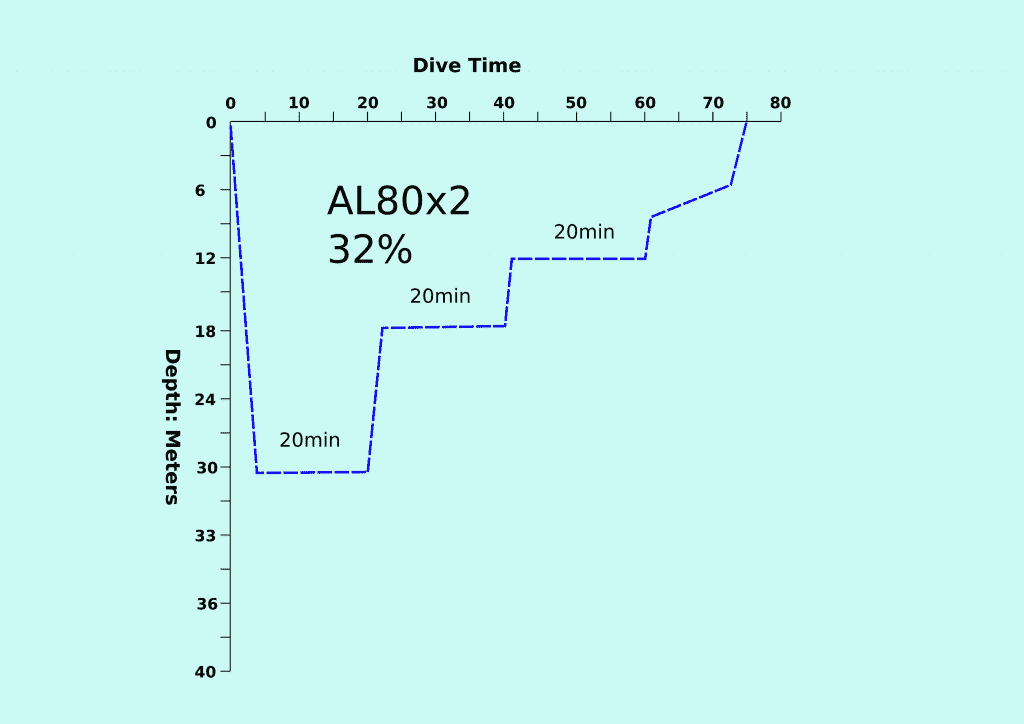
- Recreational diving with doubles: For me, this is entry-level Caribbean diving. You get two sets of doubles filled with 32% and conduct two dives in a day. Each dive is a multiple-level “no-stop” dive on the reef with a max operating depth (MOD) of 30 m/100 ft. Total run times are around 75 min, and typical dives have three levels with 20 min at 30 m/100 ft, followed by 20 min at 18 m/60 ft, and another 20 min at 10 m/30 ft. Divers then use their remaining gas until their runtime is in the 75 min range. Our boat operator allows for two 75 min dives when doing recreational dives. This allows for good time at depth followed by fun diving along the wall. All that’s needed to participate in this type of diving is GUE fundamentals and a doubles primer.
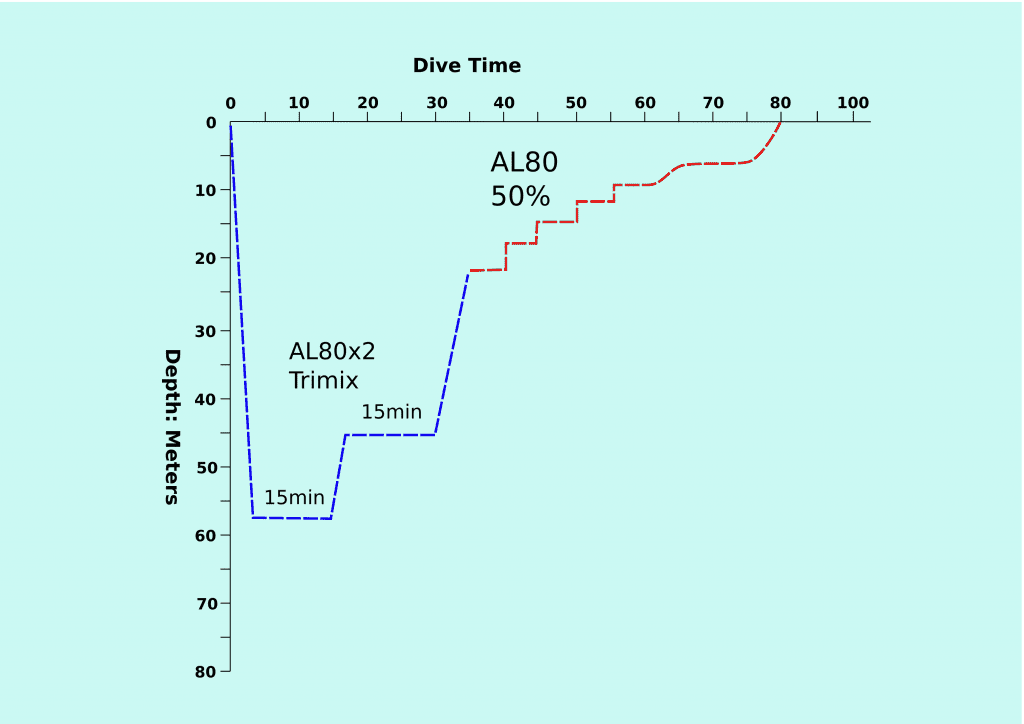
- Tech 1 dives: For GUE Tech 1 divers, the equipment of choice is a set of AL80s typically filled with trimix 18/45, and a nitrox 50 (50% O2) AL80 stage for decompression. This is the perfect combination of gear to venture on the wall with a max operating depth of 52 m/170 ft (Note that GUE standards set a maximum pO2 of 1.2 atm during the working phase of the dive, and 1.6 atm during decompression), and again a run time of 75 to 85 min. Divers can multi-level their dives into two segments with 15 min spent at 52 m/170 ft and another 15 minutes at 40 m/130 ft, followed by a nice relaxing deco drifting along the shallow reef. In order to increase the fun during deco—we call it “Fun Deco”— we make the stops longer and spend more time on the reef. A typical decompression profile might be five minutes starting at 21 m/70 feet on nitrox 50, five at 18 m/60 ft, five at 15 m /50 ft, five at 12 m/40 ft, five at 9 m/30 ft, and 10 min at 26 m/20 ft. It’s easy and FUN! AL80s and wetsuits are also an ideal combination; no need for a drysuit there. During the summer months the air temperature is around 90 degrees Fahrenheit, and the water might be as warm as 87 degrees Fahrenheit.
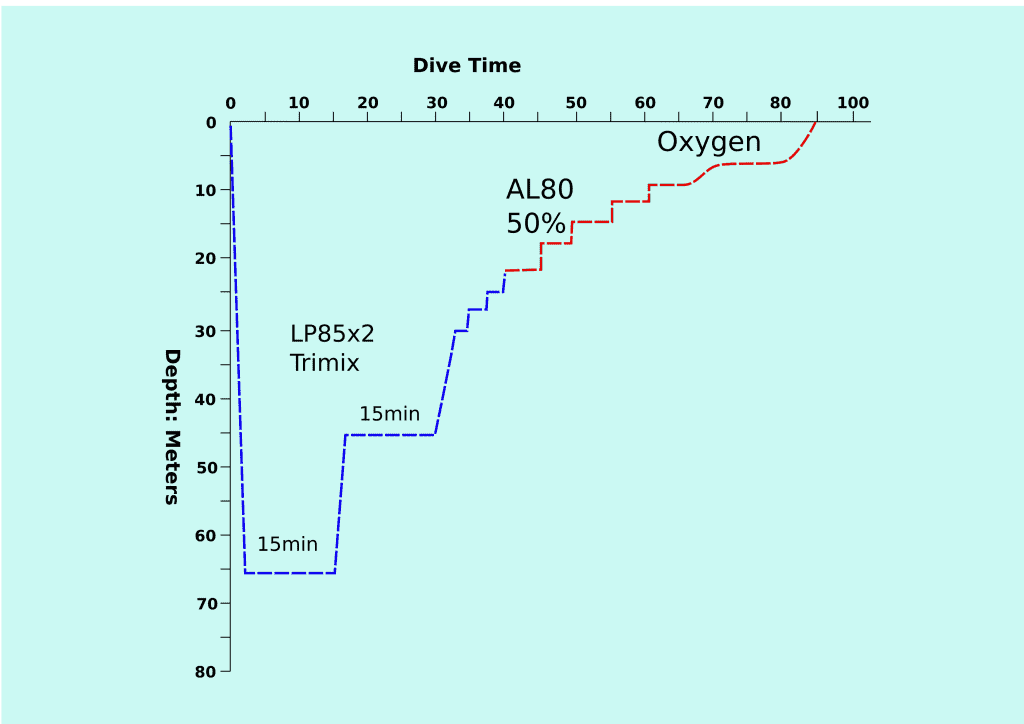
- Tech 2 dives: As people want to dive deeper on the walls, GUE Tech 2 divers get either a bottom stage to increase their time at depth, or we also have low pressure LP85 tanks available for them. They typically use both nitrox 50 and O2 for decompression. The best part of the reef is the old coastline in the 60-80 m/197-262 ft range. In order to make their gas last longer, T2 divers can also multiple-level their dive, dividing their bottom time between maximum depth and time at 45 m/148 ft. In Cozumel, there is plenty to see at maximum depth. Similar to T1 divers, decompression is done on the reef and plenty of time is spent in the 12-9 m/40-30 ft range while still on the reef, until heading out to 6 m/20 ft for a bit of O2 deco. While at 6 m/20 ft, you can still enjoy diving as you look at a school of barracudas, trevally jacks, and the occasional shark. Watching turtles is one of the treats during decompression.
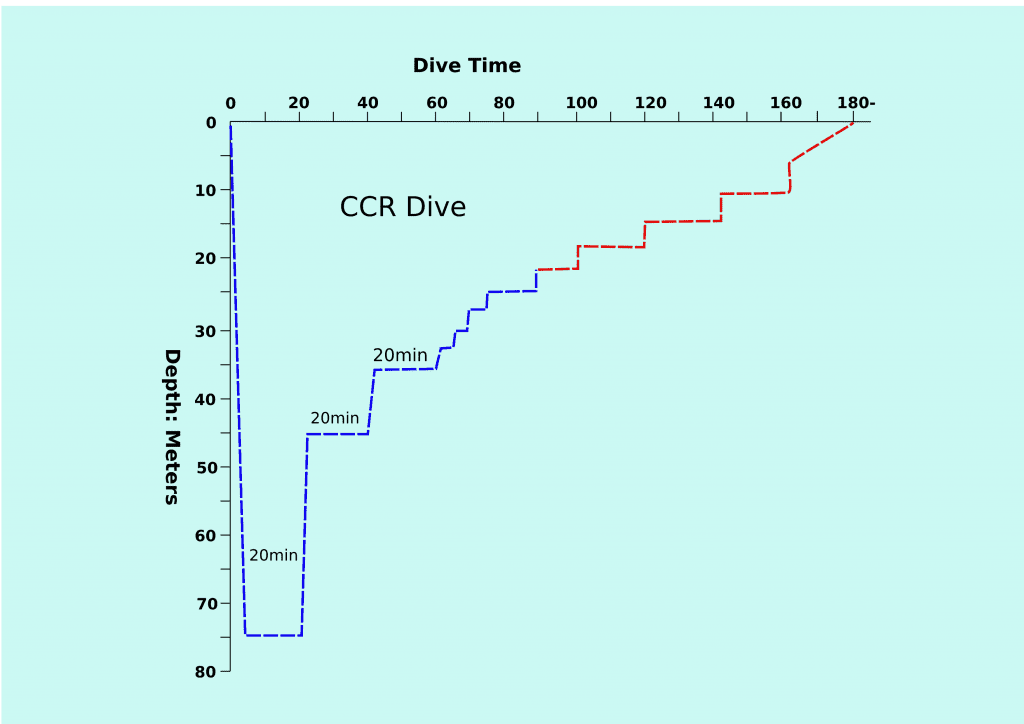
- CCR dives: The ultimate Cozumel tech dives are conducted by rebreather divers. The operator allows us to drift for up to 180 minutes, but in exchange for the long bottom time, we only conduct one dive. It’s not uncommon to have bottom times in the range of 60 minutes in the 70-80 m/230-262 ft range. These profiles require longer deco but one does so drifting along the Cozumel reefs.
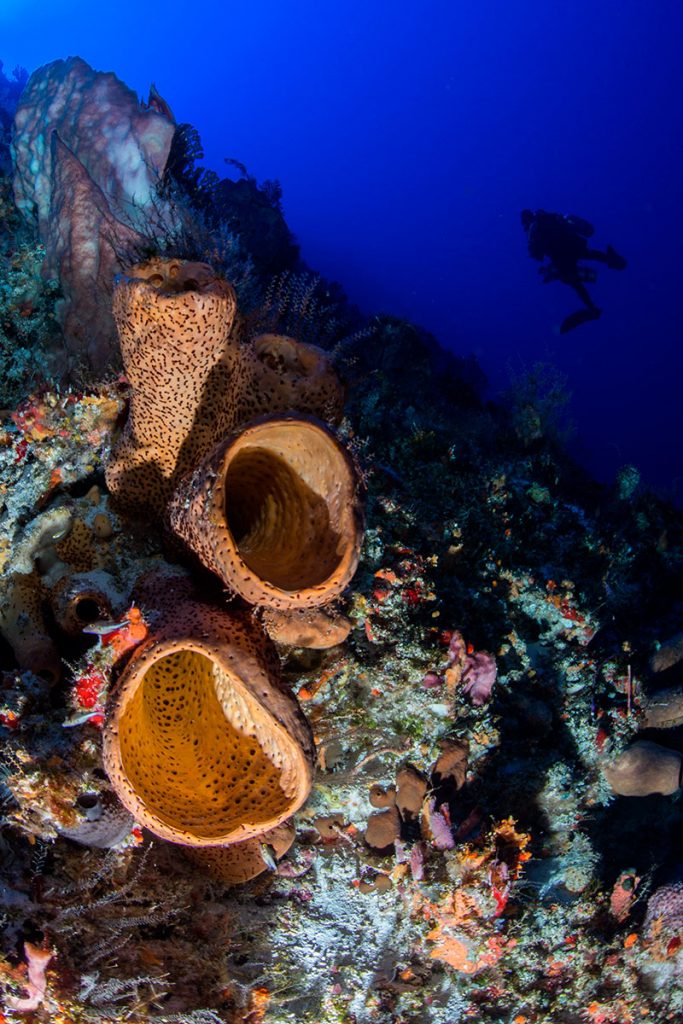
The CCR allows for more flexible decompression and increases the enjoyable part of the dives. It’s not uncommon to extend the stops in the 37-21 m/120-70 ft range diving inside a coral head. We often make our stops for 20 minutes every 3 m/10 ft on our way to the surface, which allows us to stay on the reef for most of the dive. Our 6 m/20 ft stop is not much longer than the previous stop, which is a big change for people accustomed to long 6 m/20 ft stop hangs.
All in all, diving Cozumel with the appropriate tools provides for an incredible experience and allows you to practice your skills in a wonderful and warm environment. I plan to organize several trips to Cozumel in 2020. I hope you’ll be able to make it.
Beto will be running a number of ‘tech” trips to Cozumel in 2020. If you are interested please contact him at: [email protected]
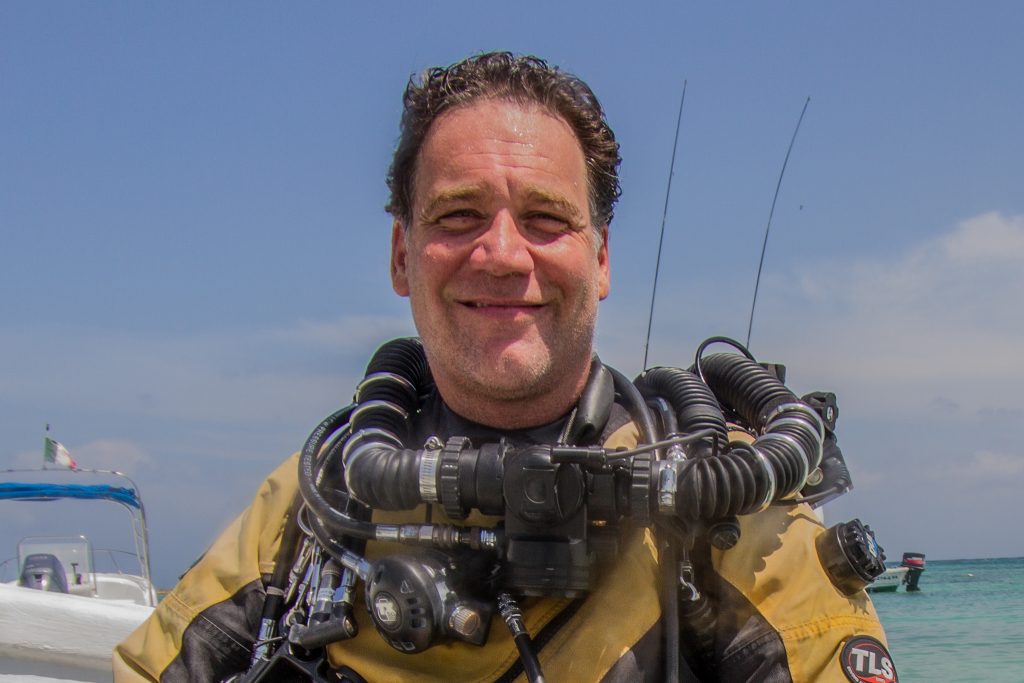
Alberto “Beto” Nava is a Venezuelan-American engineer, diver, dive instructor, and explorer based in California. He has over 18 years of diving experience and has completed over 500 cave dives. His longest cave exploration penetration dive has been 4.7 km/15,500 ft. He and his group of fellow divers particularly enjoy exploring the cenotes in the Yucatan region of Mexico.
It was on one of these excursions that he and his colleagues discovered Hoyo Negro, or “Black Hole.” The bottom of Hoyo Negro contains bones of several Ice-Age megafauna and bones of a young girl who lived 13,000 years ago. They named her Naia. This discovery started one of the most important studies of the first Americans in recent history. From 2011 to 2015, Nava was a National Geographic Explorers Grant recipient. He used the grant to continue diving and photographing Hoyo Negro. His photography is now being used in the innovative labs of the Cultural Heritage Engineering Initiative at the Qualcomm Institute at the University of California, San Diego, to create a unique 3-D experience of Hoyo Negro for those who cannot do the difficult dive and would like to experience and study the space.
Nava has also published several papers on diving, underwater mapping, and the discovery of Hoyo Negro. He holds bachelor’s and master’s degrees in computer science from the Simon Bolivar National University in Venezuela and has worked as an engineer for over twenty years.





















































